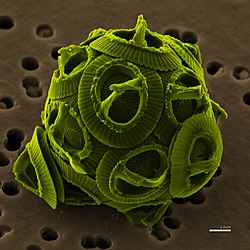Bacteria have evolved a range of resistance mechanisms to cope with heavy metal toxicity in their environments. Metals like copper, zinc, and iron are essential at low concentrations, but excessive amounts can impair cellular processes or cause death. To survive, bacteria developed strategies to prevent metal uptake, detoxify metals inside the cell, or sequester them safely. These resistance mechanisms are crucial for environmental adaptation and bioremediation efforts. [20]
Mechanisms of Resistance
Efflux Pumps
Efflux pumps are one of the primary mechanisms that bacteria use to resist heavy metals. These protein complexes actively transport toxic metal ions out of the bacterial cell, often using energy from ATP hydrolysis or ion gradients. There are several families of efflux pumps involved in metal resistance, including P-type ATPases, Resistance-Nodulation-Division (RND) pumps, and Cation Diffusion Facilitators (CDFs). These pumps help to remove metal ions such as cadmium (Cd2+), zinc (Zn2+), and cobalt (Co2+) from the cell, preventing them from reaching toxic concentrations inside. The diversity of efflux pump systems allows bacteria to adapt to various metal pollutants in their environment and to survive in contaminated habitats like industrial waste sites or polluted waters. [21] Some efflux systems are also capable of transporting antibiotics, adding an extra layer of resistance for bacteria in environments with both metal and antibiotic pressures. [22]
Once inside the bacterial cell, metal ions can disrupt critical cellular functions. To prevent this, bacteria often sequester metals by binding them to intracellular proteins, such as metallothioneins, which are small cysteine-rich proteins that have a high affinity for heavy metals. Similarly, phytochelatin-like molecules can also bind metal ions, effectively neutralizing them. This sequestration serves several purposes: it keeps metals away from reactive cellular components like proteins and DNA, reduces oxidative stress, and sometimes facilitates the transfer of metals to efflux pumps for removal. This strategy is particularly important in environments where the metals present are not easily removed through efflux alone, or when the metals must be temporarily stored until they can be safely eliminated from the cell. [23] The sequestration of metals is not just a survival tactic; it can also enable bacteria to tolerate high concentrations of metals over extended periods.
Enzymatic Detoxification
Bacteria also possess enzymes that detoxify metals by chemically modifying them into less harmful forms. One example is mercuric reductase, an enzyme that reduces toxic mercury ions (Hg2+) to elemental mercury (Hg0), which is less toxic and can be volatilized out of the cell. Similarly, arsenate reductase converts arsenate (AsO43-) into arsenite (AsO2-), a form that is less toxic and more easily expelled from the cell via efflux mechanisms. These enzymatic processes are vital for bacteria that inhabit environments contaminated with metals such as mercury, arsenic, or other heavy metals, where the ability to detoxify these substances is necessary for survival. Enzymatic detoxification also highlights the bacteria's ability to not only withstand metal toxicity but also adapt to the chemical diversity of the metal contaminants they encounter. [20] [22]
Mutations and Gene Transfer
Bacteria can acquire metal resistance through both spontaneous mutations and horizontal gene transfer. Mutations in bacterial genes may lead to changes in the structure of metal-binding proteins, efflux pumps, or enzymes involved in detoxification, increasing the bacteria's ability to handle heavy metal stress. Horizontal gene transfer (HGT) plays a key role in the spread of metal resistance, as mobile genetic elements like plasmids, transposons, and integrons carry metal resistance genes (MRGs) between bacterial species. This allows bacteria to rapidly acquire and disseminate resistance traits across microbial communities. HGT also facilitates the co-transfer of other resistance genes, including those conferring resistance to antibiotics. This process often results in bacteria that can simultaneously resist both metals and antibiotics, complicating treatment efforts in clinical settings. [24]
Environmental Impact on Resistance
Environmental factors such as soil pH, temperature, nutrient availability, and agricultural practices can influence the spread and effectiveness of metal resistance in bacterial populations. Fertilizers and pesticides, for instance, can raise the concentration of heavy metals in the soil, creating selective pressure that promotes the survival of metal-resistant bacteria. In some cases, bacterial populations in these environments may also evolve resistance to antibiotics, a phenomenon known as co-selection. This process occurs because the same mechanisms that protect bacteria from heavy metals, like efflux pumps, may also expel antibiotics, leading to bacteria that are resistant to multiple threats simultaneously. This interplay between environmental contamination and bacterial resistance underscores the need for sustainable agricultural practices and effective waste management strategies to limit the spread of resistant bacteria. [23] [25]
The exposure of bacteria to heavy metals has been shown to promote resistance to both metals and antibiotics. Efflux pumps, which are key to metal resistance, can often expel not only metal ions but also antibiotics, creating a scenario where bacteria are resistant to a wide range of antibiotics in addition to heavy metals. This dual resistance is a growing concern for public health, as it complicates the treatment of infections in humans and animals. Furthermore, the use of antibiotics in agriculture and the environment can contribute to the selection of bacteria that are resistant to both environmental toxins and drugs, making it more difficult to control bacterial infections. The link between metal and antibiotic resistance highlights the importance of monitoring metal contamination in natural environments, as well as the development of strategies to mitigate the spread of multidrug-resistant bacteria. [26]



